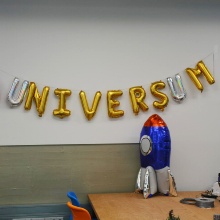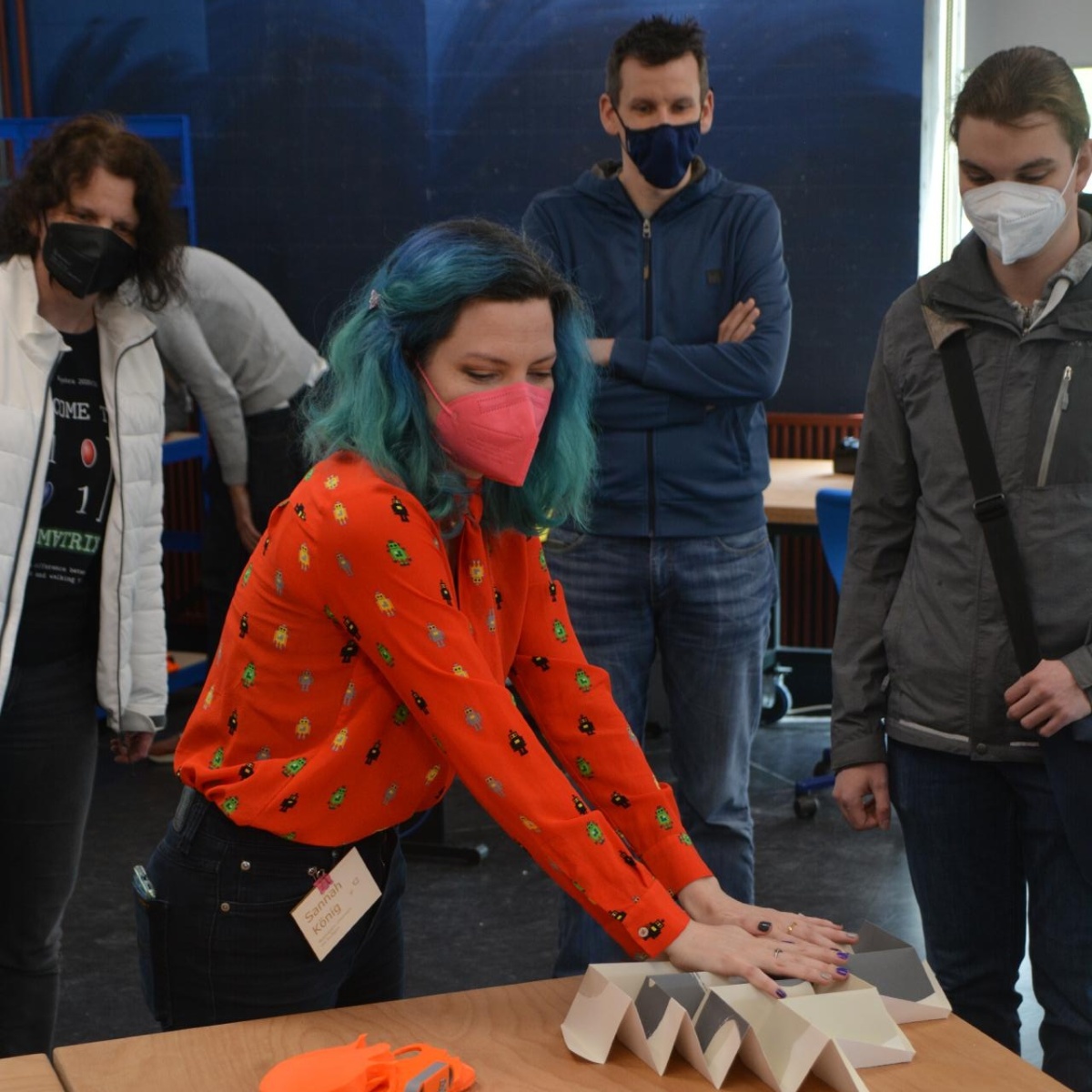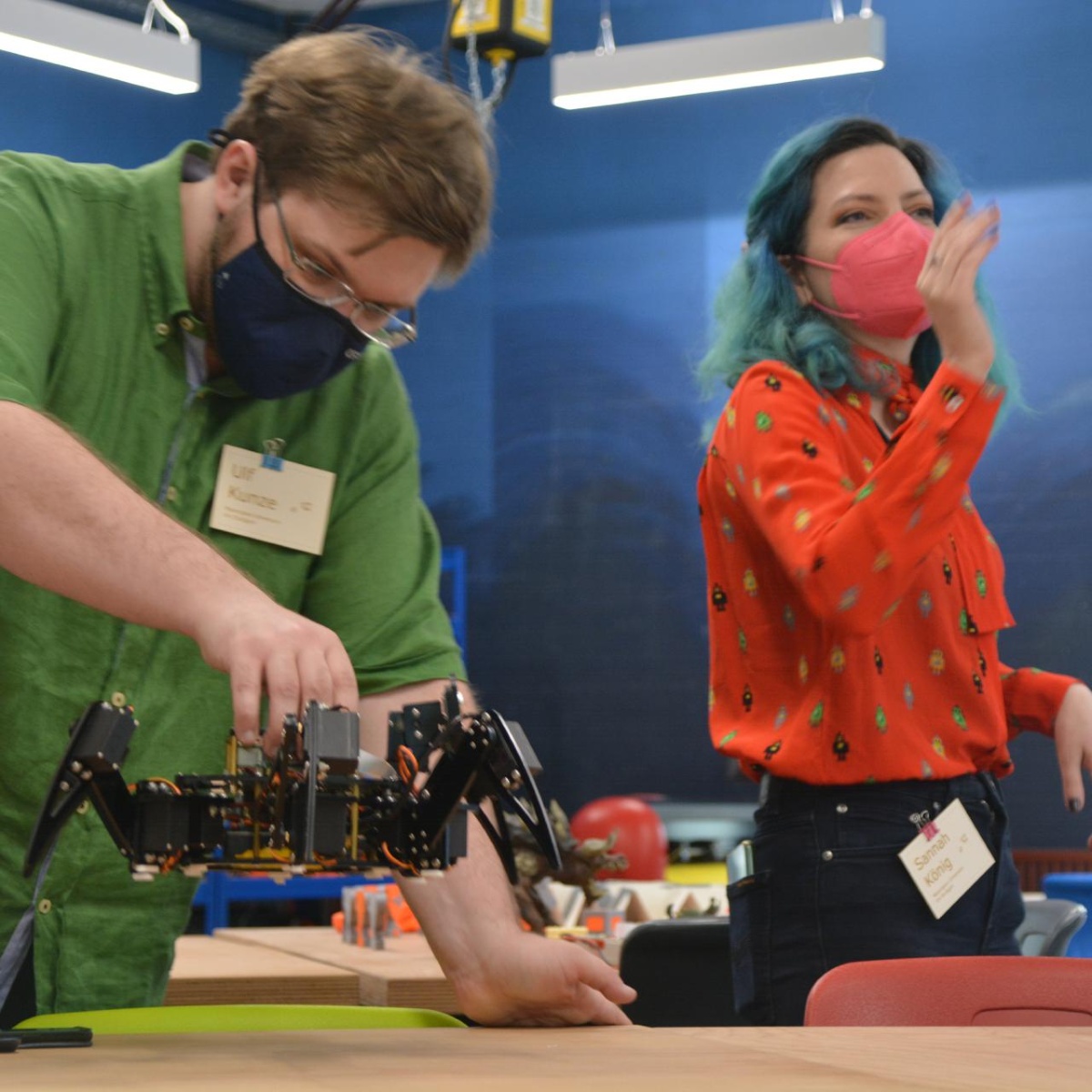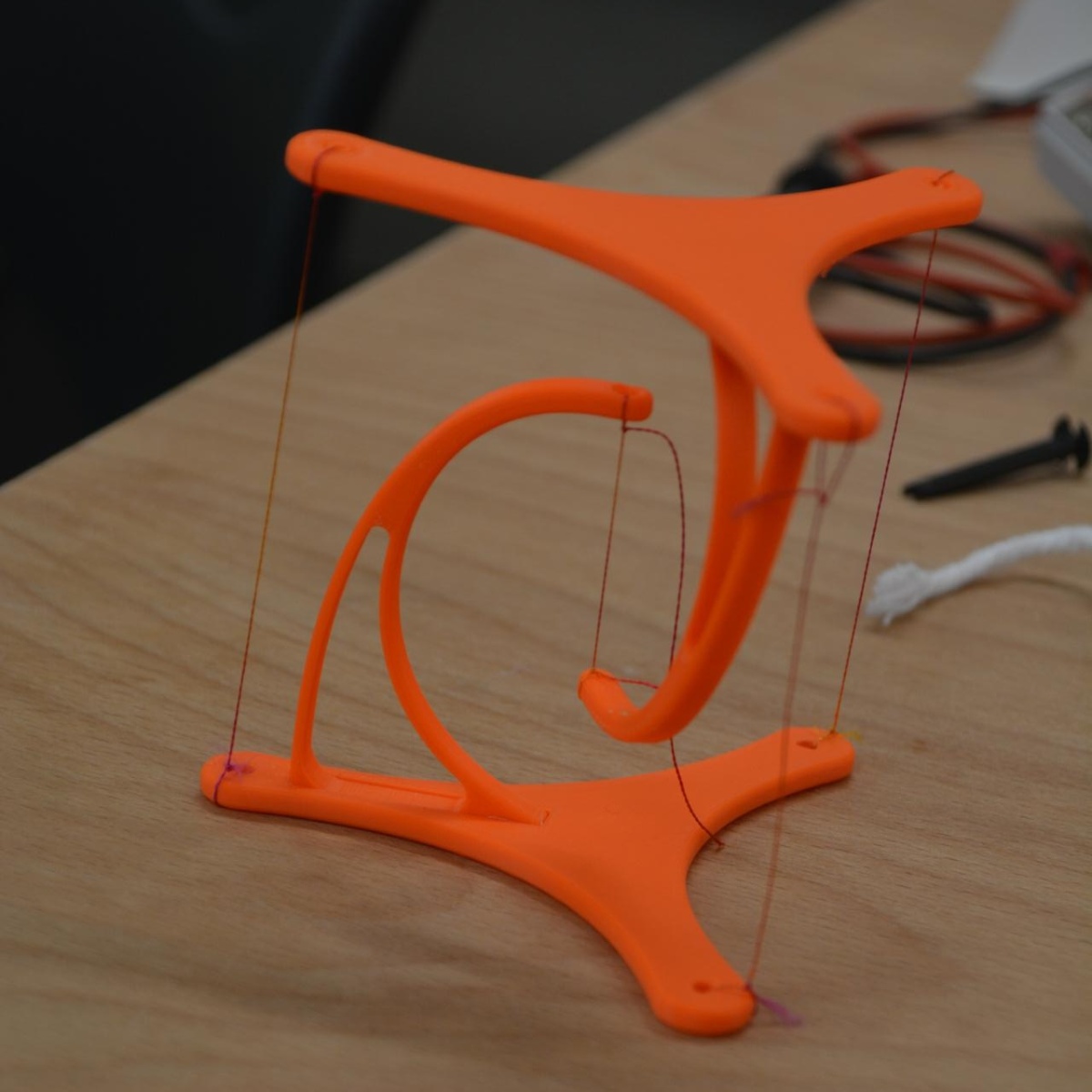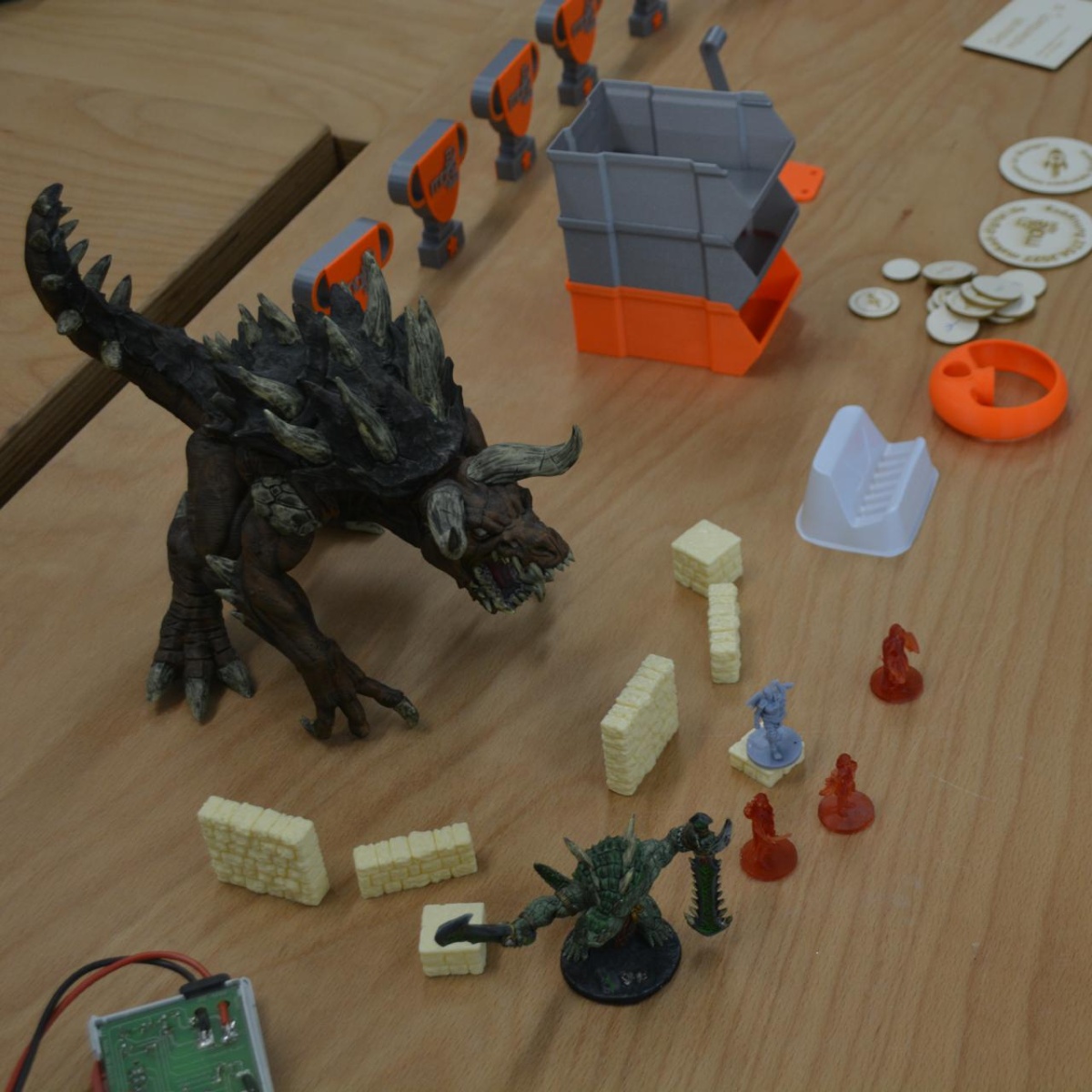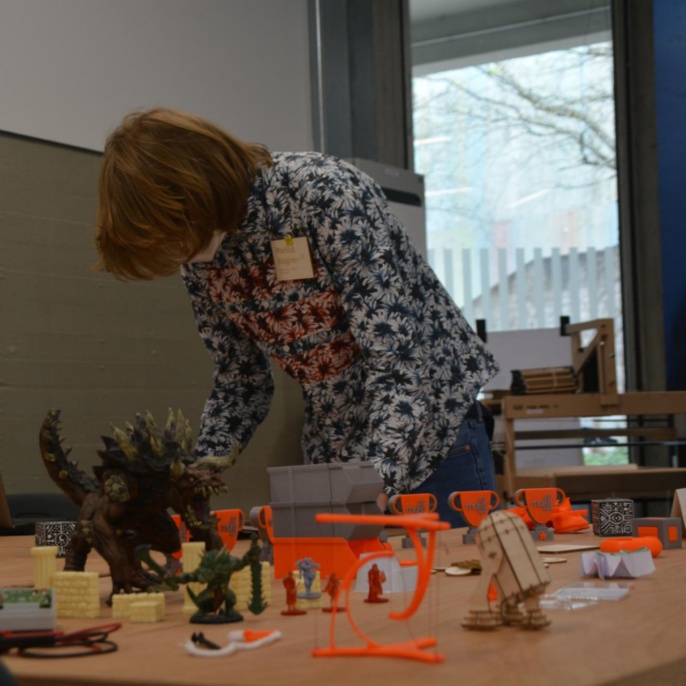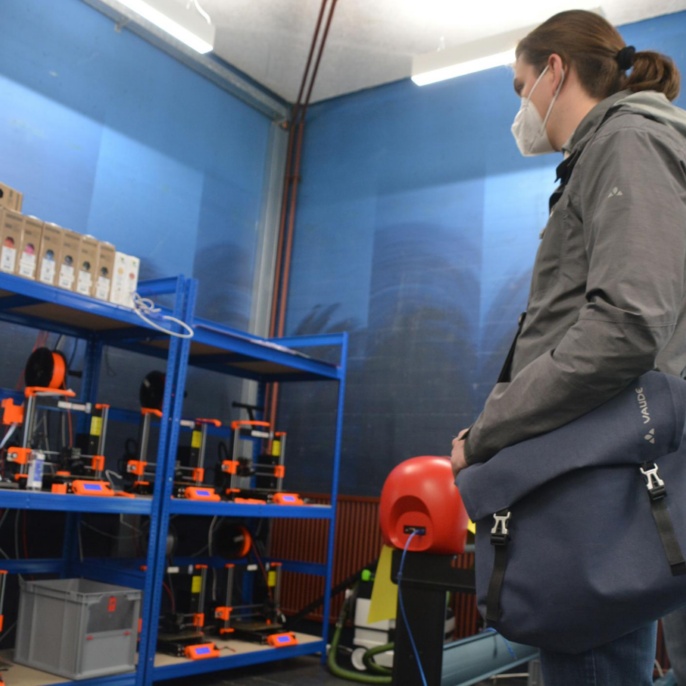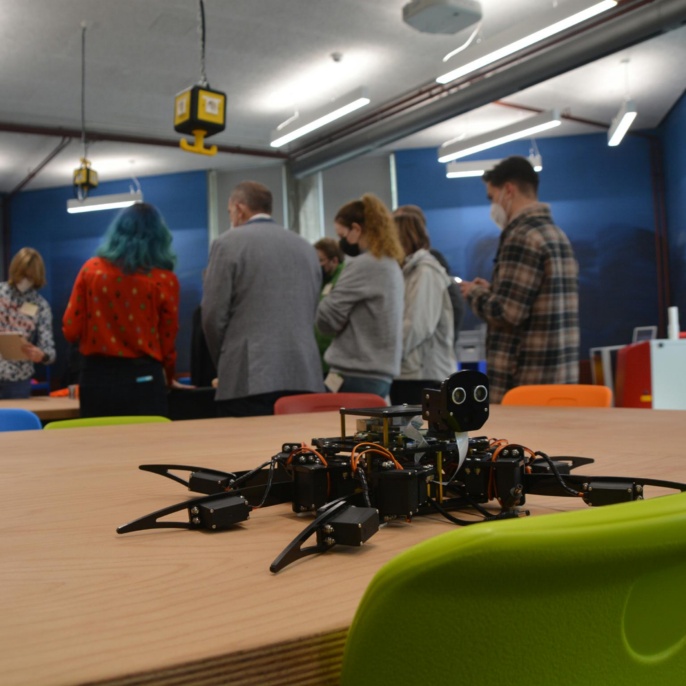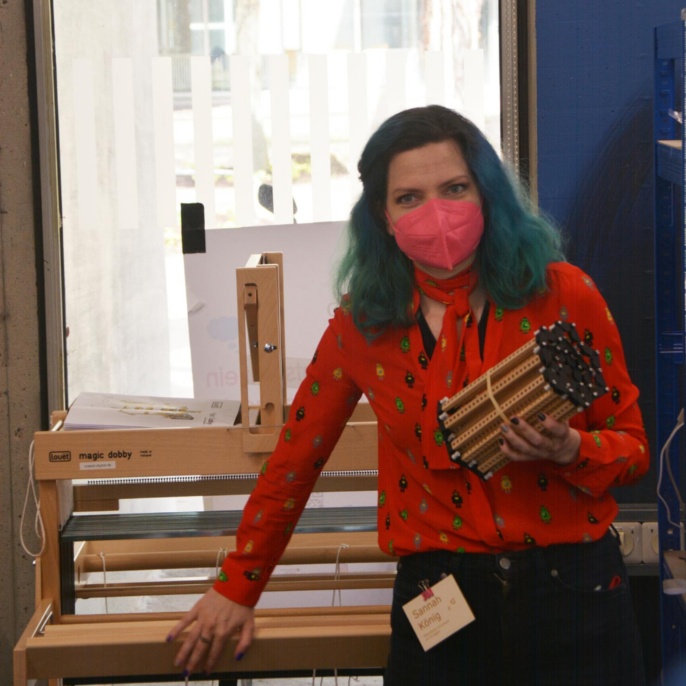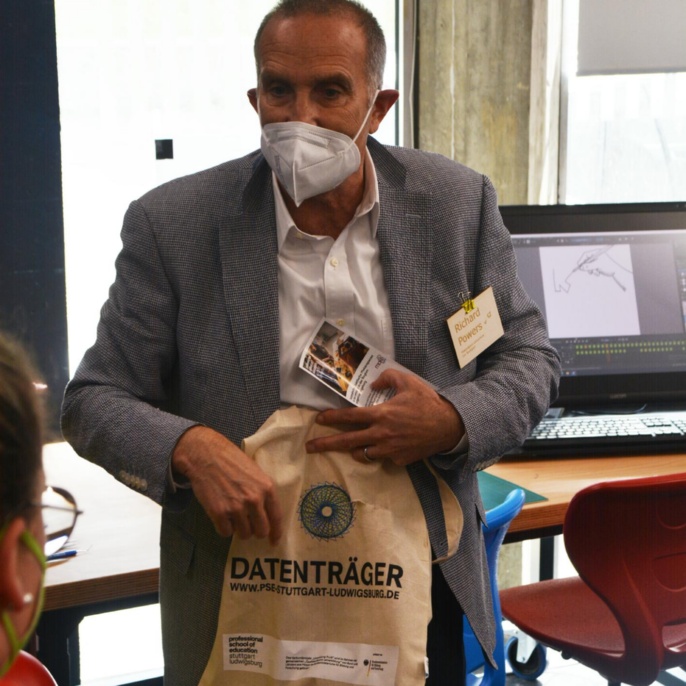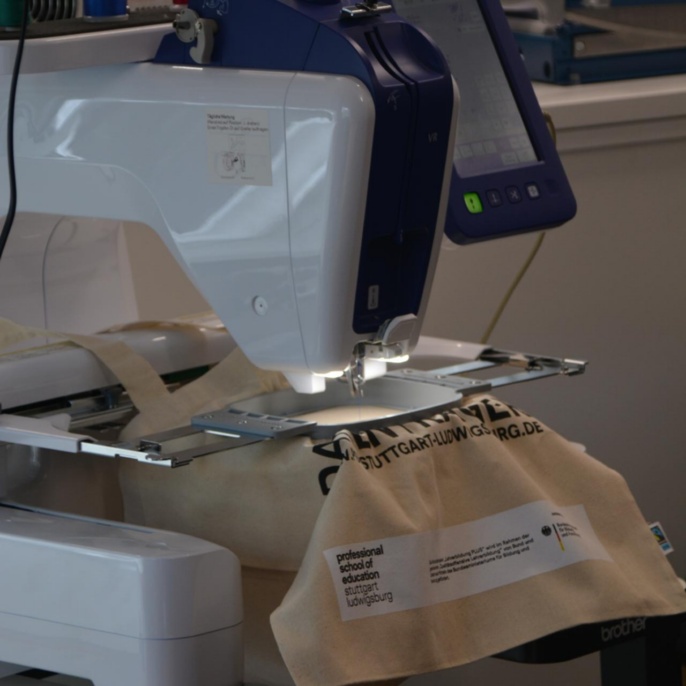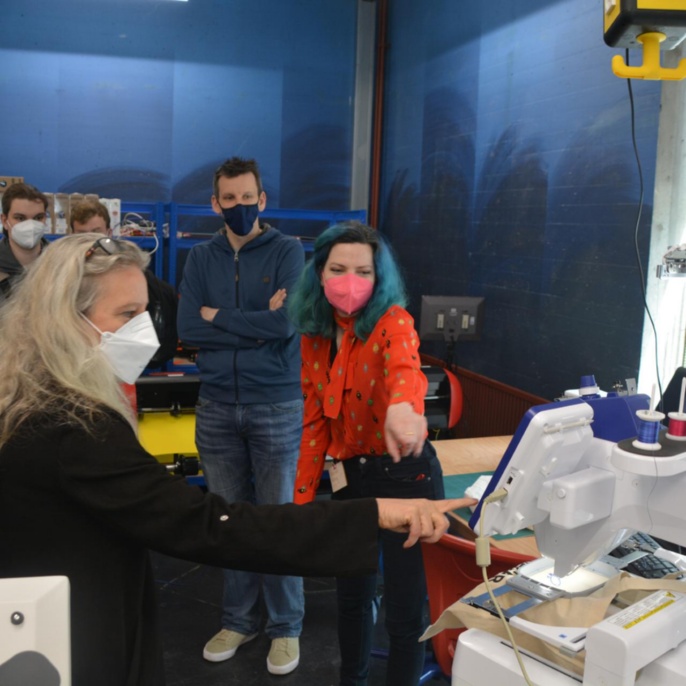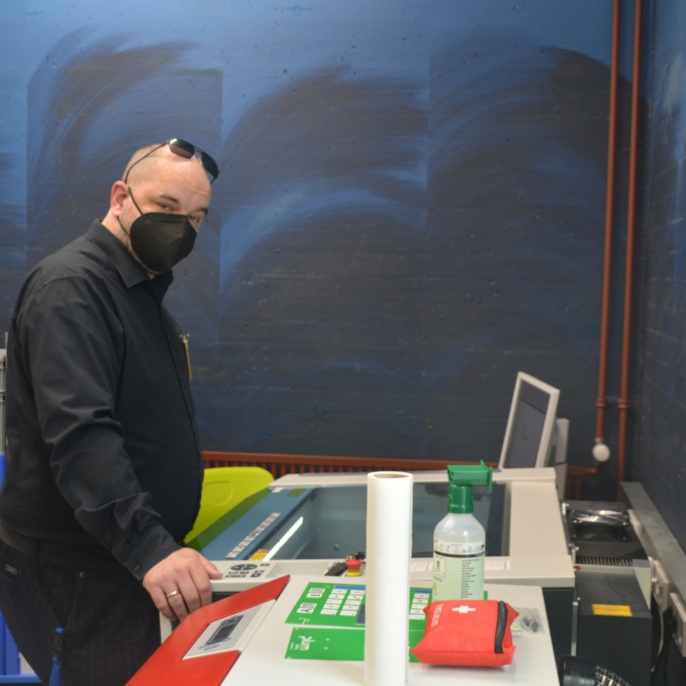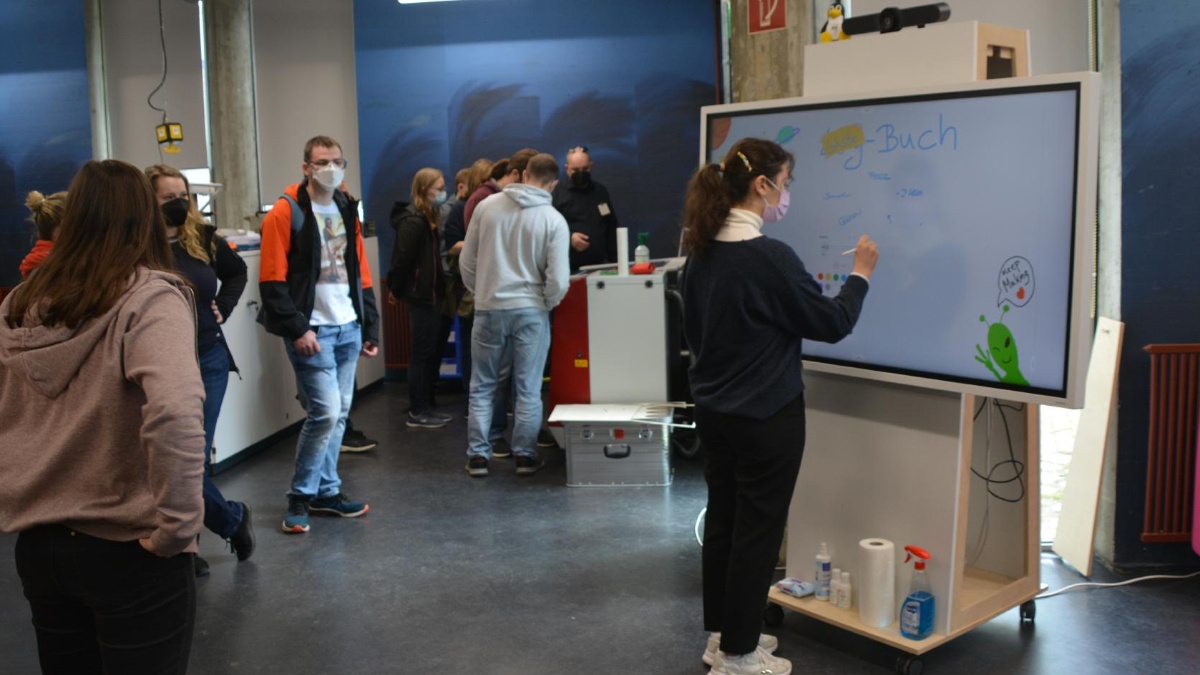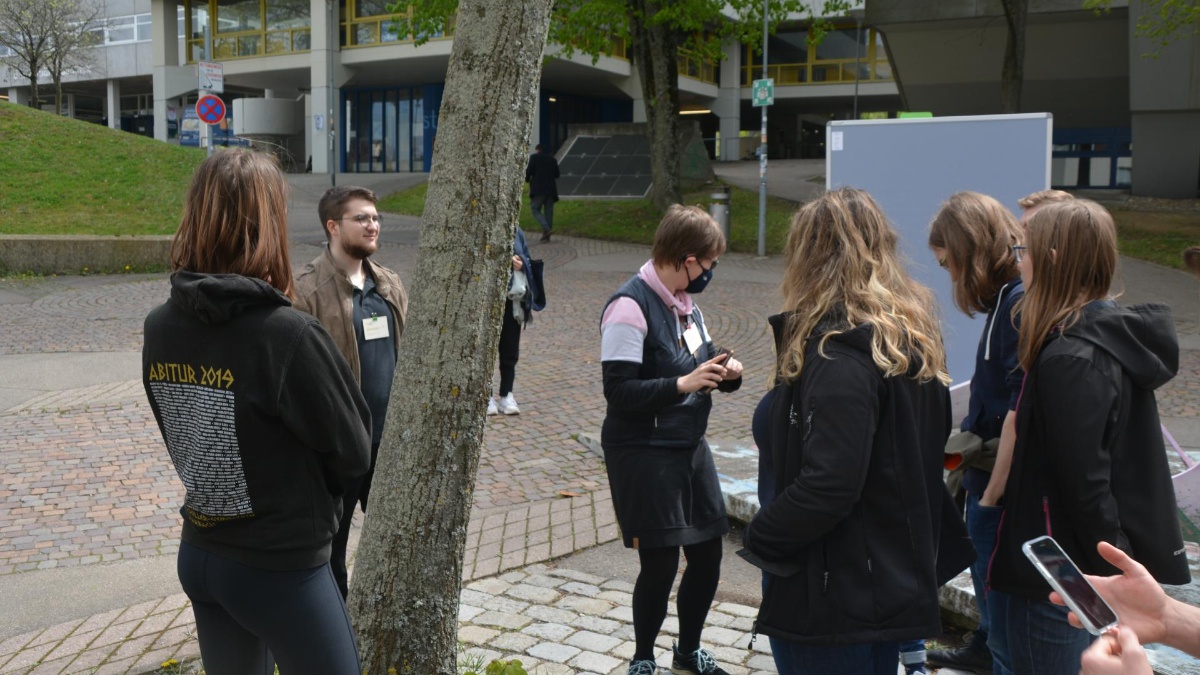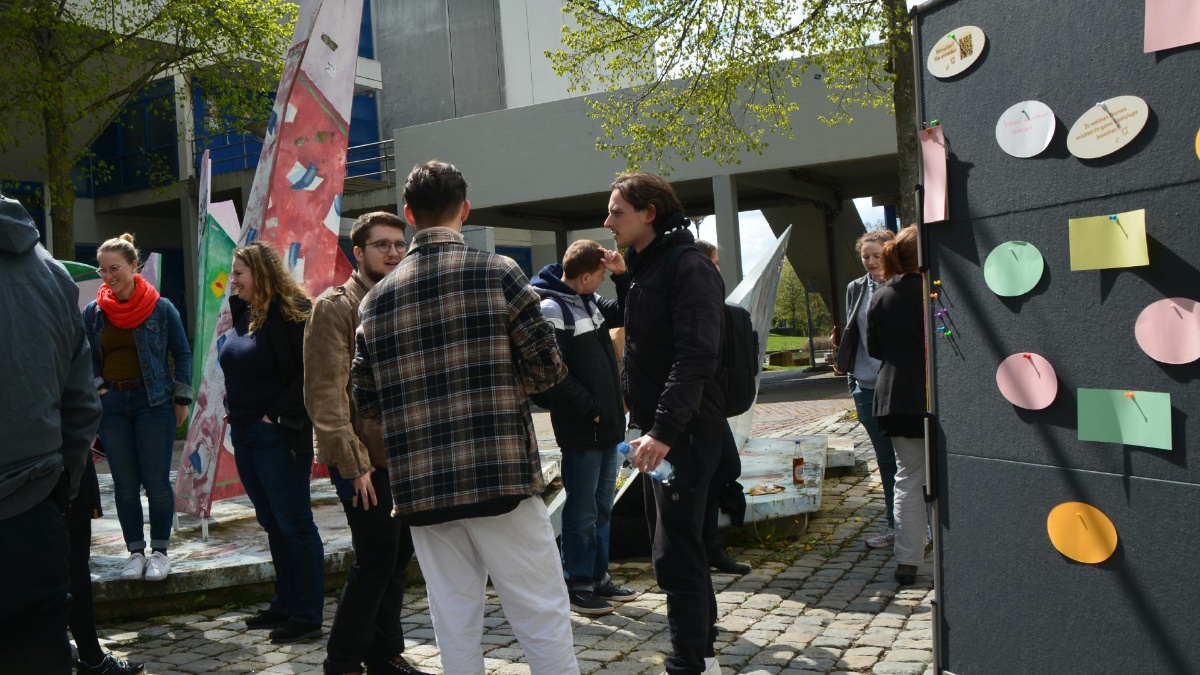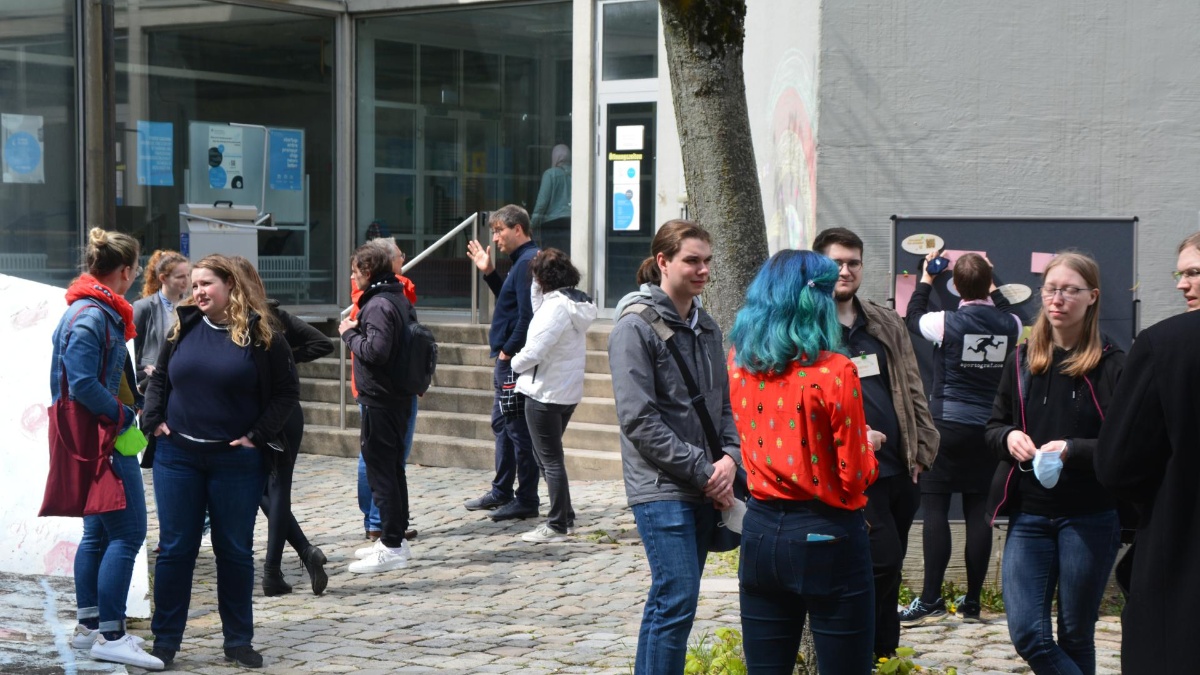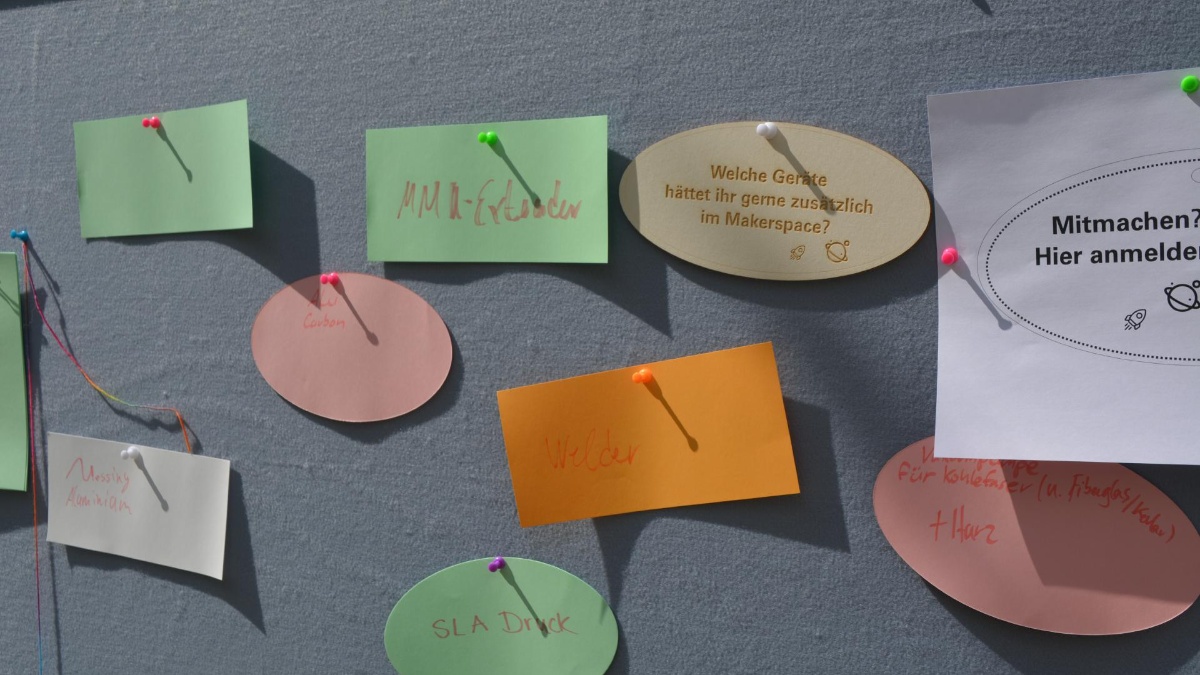Sannah König and the Stuttgart-based MakEd_digital team sent out over 25,000 emails on April 22. All students and faculty at the University of Stuttgart received an invitation to sign up for a tour of the new Makerspace. There were 180 tour spaces available. Within 24 hours, all the places available on April 27 between 2 p.m. and 6 p.m. were booked out. After all, interest in the project is huge: The project team has set up a digital creative workshop in "Universum," a room in the Vaihingen cafeteria building where in previous semesters dance lovers spent boisterous hours dancing to booming music in the campus discotheque.
It was definitely worth a visit. Firstly, because the project team members enthusiastically presented what they planned to do with their Making project. And secondly, because the equipment in the Makerspace is really worth seeing.
Making education digital
"MakEd digital, make, education, digital - that's the project name and also what we're about," explains university lecturer of American studies, passionate educator, and project collaborator Richard Powers at the beginning of the first tour. In conversation with the 20 or so people who have gathered, he invites them to begin mentally incorporating what they see into future lesson planning.
A different team member guides interested parties through the room on the first floor of the Mensa building every 20 minutes. It is spacious, despite the many tables, screens and machines. Colorful glitter balloons hang from the concrete wall at the back. Plenty of light penetrates the five-meter-high Macher laboratory through narrow window strips facing the forecourt. Right next to the exit door, a seating area in neon colors invites you to get creative. According to the application, this area is an "instructional spatial structural element for learning reflection and the promotion of interpersonal skills."
The Stuttgart MakEd_digital team brings together experts from computer science, education, and engineering. For this project, the individuals are affiliated with the Technical Information and Communication Services (TIK). As different as their areas of expertise are - what they all have in common is that they enjoy being creative. They are particularly enthusiastic about the sheer endless possibilities and flexibility offered by digital, i.e. computer-based, devices.
The fact that there is now a place that encourages such creativity also attracts interested individuals who have very specific questions. For example, Ulf Kunze who is currently trying to get an eight-legged robot to move, considers a student's plan on how to implement computer control.
The future of teaching is becoming more digital
Meanwhile, it's time to welcome guests on the second tour. Despite their different interests, all visitors receive the same tour. Three large mobile worktables are stationed at the entrance. These can be moved on wheels, adjusted in height and used for networked work - even from a wheelchair, because a wheelchair fits underneath.
Some of the project employees tell us, off the record, that lecturers sometimes have an aversion to modern technology. In this context, the pandemic and the digital semesters in particular have shown that the future of teaching will become increasingly digital. For this reason, the project was awarded funding by the Ministry of Education in the current round of the "Quality Offensive for Teacher Education".
Since 2020, the MakEd_digital team has been designing, procuring, and experimenting to provide students and faculty with the optimal digital environment and best practices for digital teaching. Makerspaces are being planned at various locations, in Ludwigsburg and on the university campuses. A subgroup is also planning a mobile makerspace. In Stuttgart, the "Universum" makerspace has now been completed.
Origami folding art and a digital loom
At the opening event, the third table looks as if a twelve-year-old child has cleared all his action figures and other knickknacks out of the cupboard and left them on the table. A menacing dragon from a children's series, mathematical 3D puzzles, a physics toy where the top component appears to be held from below with threads - anyone who is easily distracted would get no further than these 3D printed products and miss the rest of the tour. The exhibits were all prototyped by the project team to test equipment and capabilities. These were preceded by computer models.
An example of origami folding art is also on the table. What might at first seem like an idle handicraft project, is actually a method that is also used in space travel, explains Sannah König during her tour. The James Webb Telescope's solar shield, for example, unfolds like intricate origami.
The loom in the corner is reminiscent of elementary school lessons in textile design; except that it is digital. Patterns can be created on the computer, and the mechanical wooden frame then weaves the fibers itself. And during the tour visitors learn that punched cards, the earliest storage media used in the field of computer science, originally came from mechanical looms. So, the textile industry was already digital even before computers existed.
The printers build their own accessories
Eight 3D printers with orange plastic mounts are lined up on a workshop shelf in the next corner. Some of them almost seem to move their precise nozzles over their metal surface all by themselves. Fine orange plastic strands overlay orange objects, growing upward one layer at a time. One of the printers is just finishing a task. Printer operator Thomas Orgeldinger takes the finished object in his hand and sticks it on the front of the printer: "This is a camera holder. In the future, every printer will have a camera. Then we will be able to see on a screen whether the machines are doing what they are supposed to." - So, the printers even build their own accessories.
The cutting plotter is responsible for 2D surfaces. It can cut vinyl cards, sticker films and other flat plastics following computer-generated cutting lines. Two digital sewing and embroidery machines are also ready to use. To impress the guests, one of these machines continues an impressively nimble and precise embroidery design on a cotton bag during each tour. Other machines are left to speak for themselves and remain non-operational during the tour: A transfer press for T-shirt films and a thermoforming machine to create casts from 3D molds. Next to these, a handful of oscilloscopes are huddled together for experiments and repairs. These were donated to the Makerspace by the Electrical Engineering department.
Machines and methods
This project is not only about machines. It also focuses on communicating different methods. And that's why a small animation with an invitation to a workshop is playing on a display. At this workshop, Maria Barnhart will show how animations can be created using the graphics program. Workshops take place every week and are announced on ILIAS.
Burn marks, rectangular and oval gaps spread across a large poplar wood panel. This lies in an indentation in a large red box, about as high as a washing machine, but a little wider. This is the laser cutter. It can emboss and cut wood, acrylic, cardboard, paper - anything organic. The machine roars obtrusively when it is running. This is because the smoke that is produced is sucked into another large red box.
So far, the nameplates of the team members have been cut from the panel. Admittedly, a wooden name card with engraved names does look rather impressive. This "making" was, of course, also computer controlled. Jan Vanvinkenroye is cutting and designing signs for the bulletin boards set up outside. A new experimental finding: QR codes burned into wood need quite a large diameter for cameras to be able to read them. And the indentations aren't black enough.
Open on weekdays
Before the guests are allowed outside for the meet and greet, they immortalize themselves in a guest book with a diagonal measurement of one and a half meters. This is, of course, also digital. The touch screen serves as a canvas on other days. Large graphics can be created effortlessly using this, and digital blackboard images can be designed almost in real size. With the corresponding pens, this also works intuitively, as the visitors discover.
Outside the door the conversation flows, characterized by the jovial mood. Some students and employees stay a little longer, talk about their wishes, think about methods, and pin these on the movable walls. König and Barnhart also successfully recruit students who are willing to get involved in the MakEd_digital community. The aim is to ensure that the new Makerspace in the "Universum" is not only open on selected days. Following the opening, it should be open every weekday. The exact opening hours and the time slots that are blocked for workshops or didactics lectures are always updated in the Makerspace calendar on ILIAS. If you weren't able to reserve a place on the tour, you are welcome to drop by and get inspired.
Open on Science Day
Science Day will be held on June 25, 2022. The Makerspace will also be opening its doors for you at Pfaffenwaldring 45 to give you an insight into the new digital creative space.
The project MakEd_digital is part of the Professional School of Education (PSE) Stuttgart-Ludwigsburg. The University of Stuttgart and three of the region's universities joined forces in spring 2020 to help student teachers and university lecturers become fit for digital teaching. The state of Baden-Württemberg funds this project as part of the Quality Offensive for Teacher Education.


